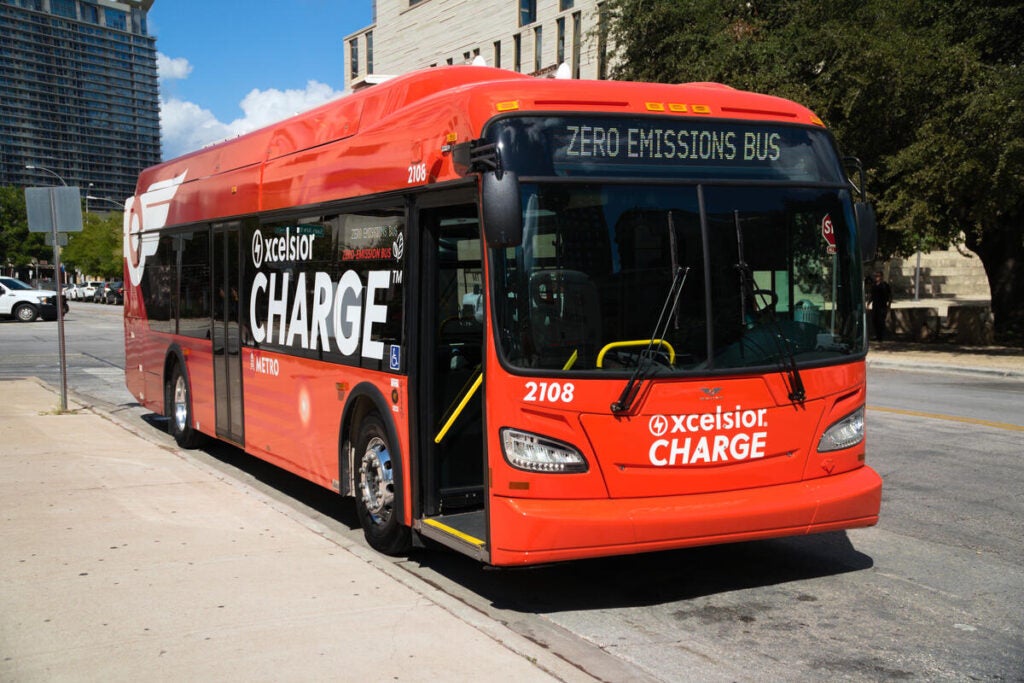One year later, taking stock of state “action plans” on clean trucks, buses
It’s been exactly one year since nearly two dozen U.S. and Canadian states signed onto a roadmap to 100% zero-emission truck sales by 2050. While this was an important milestone, it was only intended to be the starting point. States were encouraged to build on these plans by developing localized versions that would meet their own unique needs. It’s part of an MOU – the largest multi-state action on clean transportation in U.S. history — that 19 states comprising a third of the medium- and heavy-duty market signed on to back in 2020.
So, how are these state plans coming along? While many states have taken discrete steps to advance zero-emission truck and buses, most states that adopted the model action plan last year have not taken steps to develop their own blueprints for a zero-tailpipe future.
Now is the time for states to advance a holistic set of actions that will lead to 100% zero-emission trucks and buses as quickly as possible. Many of these states have adopted ambitious climate and clean air targets that require big pollution reductions from trucks and buses to be successful. Engaging in this planning process is also an opportunity for the signatory states to reap economic growth while improving air quality for their residents. A recent report by Environmental Defense Fund and WSP USA found that EV manufacturers have announced more than $120 billion in investments and 143,000 new American jobs in the last eight years alone.
One year later, taking stock of state “action plans” on clean trucks, buses Share on XTo reap these benefits and more, states should develop a tailored EV transition plan that incorporates the following broad themes:
Plot a path to 100% zero-emission truck sales by at least 2035. As Americans suffer unprecedented extreme heat, historic wildfire smoke and record ozone days across the country this summer, states should be looking for ways to reign in pollution from the biggest contributors to the emissions that cause those impacts. Trucks and buses are only about ten percent of all vehicles on U.S. roads, but they are responsible for more than a quarter of all climate pollution from the transportation sector and account for nearly half the deaths from air pollution linked to transportation. Simply put, states can and should look to advance a more ambitious goal than 2050 in line with 100% sales by the middle of next decade and even faster where possible. Indeed, many use cases can successfully be transitioned to 100% sales of zero-emission vehicles by 2030.
Prioritize deployments in disadvantaged communities. It is clear that pollution is not felt evenly. Mostly due to historical redlining, low-wealth communities and communities of color are much more likely to live near key sources of transportation pollution like freight corridors, ports, and industrial facilities. As such, policy solutions must accurately identify the most burdened communities through means such as increased air quality monitoring and prioritize zero-emission truck deployments here first. The people best suited to understanding what improvements are needed and how to effectuate them are the people living in those communities. States must develop robust processes to engage these communities at every step of the way and build authentic partnerships.
Adopt achievable emissions standards. Key policies like the Advanced Clean Trucks rule and the Heavy-Duty Omnibus rule will be essential to growing the market for zero-emission trucks and buses, while ensuring that new diesel vehicles are as clean as possible. Though it is true that the EPA has recently adopted heavy-duty NOx standards, states have the ability to go beyond those federal regulations. Doing so will slash climate and air pollution, while improving local economies by creating new jobs and increasing societal benefits.
Focus on charging. Large-scale electrification of trucks requires grid upgrades to support the added load from charging. State and federal incentives for charging are an excellent start, but an increased focus on understanding near- and longer-term infrastructure needs of all medium- and heavy-duty vehicles will be necessary, as well as developing a clear set of standards, such as cybersecurity and interoperability, that can ensure a good customer experience. And, utilities can meet the growing demand for charging by making smart, proactive investments to deliver clean power to where it’s needed — all while benefiting from the increased revenue of selling more electricity. Working with fleets and decisionmakers to ensure the grid is ready to accommodate these vehicles is key and includes things like developing a suite of electricity rates to save customers money (and doing the education necessary to ensure customers understand them), properly integrating renewable energy and streamlining interconnection timelines.
Invest in financial incentives. While the total cost of ownership of vehicles is demonstrably and increasingly favorable, the upfront cost of zero-emission trucks can still be a barrier, particularly for small businesses. Ensuring a suite of incentive options that can help mitigate the cost differential, as well as help pay for charging infrastructure, will be a key part of a successful transition.
On the anniversary of the model action plan, it’s time for states to get to work developing their own roadmaps so they can begin to realize the economic, health and climate benefits of a transition to zero-emission vehicles. The planet and state’s residents can’t afford to wait any longer.











